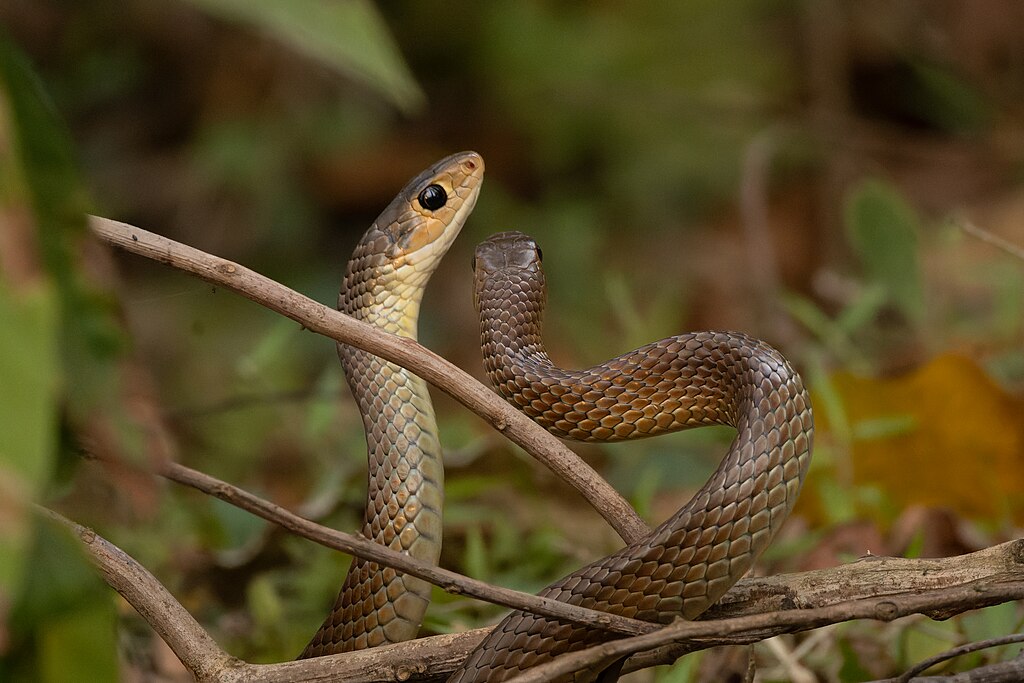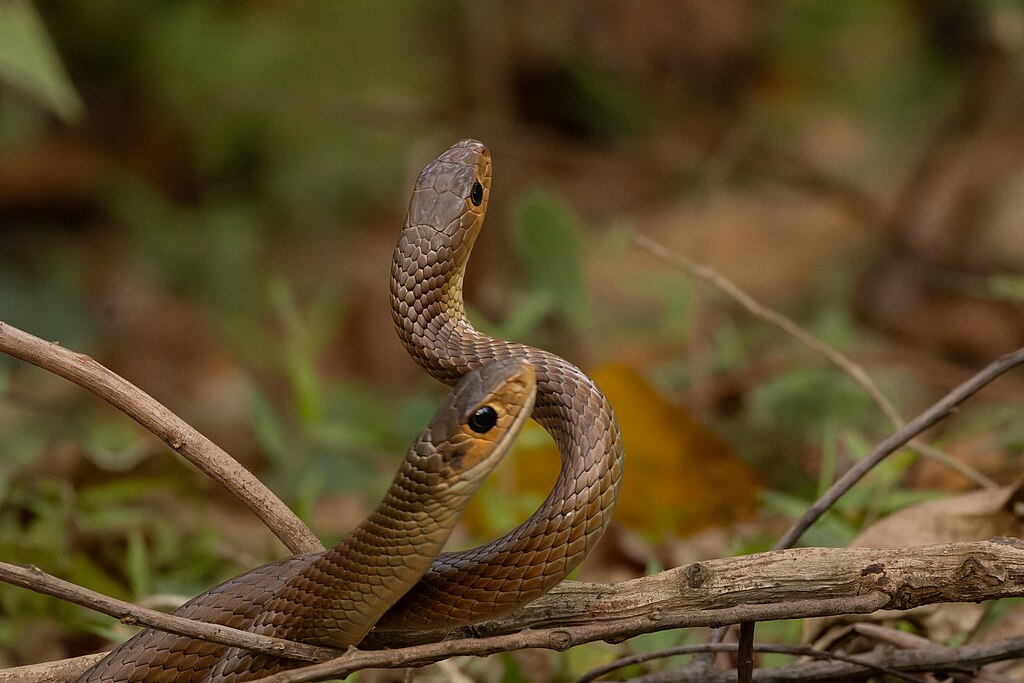The emotional lives of animals have long fascinated scientists and animal lovers alike. While mammals like elephants and primates are well-known for their complex emotional responses to death, reptiles—particularly snakes—remain more enigmatic. The question of whether snakes mourn their mates touches on deeper questions about reptilian cognition, emotional capacity, and social bonding. This exploration takes us into the mysterious world of snake behavior, challenging our assumptions about these often misunderstood creatures and examining what science currently tells us about their capacity for attachment and grief.
Understanding Snake Social Behavior

Snakes are generally considered solitary animals, with most species coming together primarily for mating purposes. Unlike highly social mammals that form long-term bonds, snakes typically maintain independent lives outside of breeding season. However, this generalization doesn’t apply uniformly across all snake species. Some, like certain garter snakes, demonstrate more complex social structures, including communal denning during winter months where hundreds may gather together. This social variation across species suggests that our understanding of snake relationships might be more nuanced than previously thought. The degree of social connection varies significantly by species, habitat, and individual circumstances.
The Science of Reptilian Emotions

Reptilian brains differ structurally from mammalian brains, particularly in areas associated with emotion and social cognition. Snakes possess a more primitive brain structure that lacks the complex neocortex found in mammals—the region often associated with higher emotions and social bonding. However, recent neuroscience research has revealed that emotional responses may not be exclusively tied to neocortical structures. Snakes do possess brain regions homologous to those associated with basic emotions in other vertebrates, including the amygdala and parts of the limbic system. These structures could potentially support fundamental emotional states, even if they differ qualitatively from mammalian emotions.
Mating Bonds in Snake Species

The nature and duration of mating relationships vary dramatically across snake species. Most engage in brief reproductive encounters with little evidence of pair bonding. For example, male king cobras may guard females before and during mating, but this behavior typically ends after reproduction is complete. In contrast, certain species like some pythons exhibit more extended mating associations, with males staying near females during egg incubation. Research on timber rattlesnakes suggests that some individuals may mate with the same partner across multiple breeding seasons when encountering each other again, though whether this represents recognition or simply chance remains unclear. These variations in mating patterns complicate our understanding of potential attachment between snake pairs.
Observable Responses to Mate Loss

Documented observations of snake responses to mate death remain exceptionally rare in scientific literature. Unlike the well-documented grieving behaviors in elephants or primates, snakes haven’t been observed performing mourning rituals or showing distinct behavioral changes following a mate’s death. Field researchers have occasionally noted cases where snakes remain near dead conspecifics, though interpreting these behaviors proves challenging. Such proximity could potentially represent confusion, investigation of unusual scents, or opportunistic protection of a territory rather than emotional attachment. The scarcity of long-term behavioral studies following mate loss in snakes creates significant gaps in our understanding of their potential emotional responses.
Stress Responses in Snakes

While mourning behaviors haven’t been conclusively documented, snakes do demonstrate measurable physiological stress responses to environmental changes and social disruptions. Studies measuring cortisol levels in captive snakes show elevated stress hormones when housing conditions change or when exposed to unfamiliar conspecifics. Some species kept in pairs in captivity may show temporarily altered behavior patterns when separated, including reduced activity, appetite changes, and increased defensive posturing. These stress responses indicate that snakes are sensitive to changes in their social environment, even if they don’t display obvious grieving behaviors. The physiological impact of losing a familiar conspecific might exist even if not readily observable through behavior.
Comparing Snake Behavior to Mammalian Mourning

The stark contrast between mammalian and reptilian responses to death deserves careful consideration. Mammals like elephants and dolphins exhibit clear mourning behaviors, including carrying deceased young, maintaining vigils beside dead companions, and showing visible signs of distress. These behaviors stem partly from the extensive parental care and social bonds typical in many mammal species. Snakes, with their different evolutionary trajectory, have developed behavioral patterns centered around individual survival rather than group cohesion. Their primarily solitary lifestyle has likely shaped their emotional architecture differently, potentially limiting the evolutionary advantage of developing attachment-based grief responses. This fundamental difference in social organization may explain the apparent absence of mourning behaviors.
The Challenge of Anthropomorphism

When discussing potential emotional states in non-human animals, particularly reptiles, scientists must navigate the pitfalls of anthropomorphism—the attribution of human characteristics to non-human entities. Interpreting snake behavior through a human emotional lens risks misunderstanding their actual experience. What might appear as indifference to a mate’s death could actually represent an appropriate species-specific response. Conversely, assuming snakes lack emotional capacity entirely may underestimate their experiential world. Finding the balance between recognizing potential emotional states in snakes while avoiding projecting human-like emotions onto them remains a significant scientific challenge. Modern approaches attempt to understand snake behavior on its own terms rather than through strictly human emotional categories.
Species with More Complex Social Behaviors

Certain snake species demonstrate social complexities that could potentially support more sophisticated emotional responses. The aforementioned garter snakes not only gather in large communal dens but show preferences for aggregating with familiar individuals. Research with captive corn snakes indicates they can distinguish between familiar and unfamiliar snakes, suggesting some level of social recognition. The increasingly studied social behaviors of rock pythons include cooperative hunting strategies in some contexts. These more socially complex species might theoretically possess greater capacity for attachment and subsequent responses to separation or loss. Future research focusing specifically on these socially nuanced species might reveal responses to mate loss not observed in more solitary snake species.
Captive Observations vs. Wild Behavior

The majority of detailed snake behavior observations come from captive environments, which may not accurately reflect natural behaviors. Captivity often creates artificial social dynamics, with snakes housed together in ways that wouldn’t occur naturally. Some reptile keepers report behavioral changes in paired snakes when one dies, including temporary inactivity, altered feeding patterns, or increased searching behaviors. However, these anecdotal reports rarely meet scientific standards of observation and documentation. Wild studies face the significant challenge of continuously monitoring specific snake pairs before and after natural deaths. The discrepancy between captive observations and natural behaviors creates uncertainty about how snakes might respond to mate loss in their natural habitat.
The Neurological Basis of Attachment

The neurological foundations of attachment and grief in vertebrates provide another perspective on snake capabilities. In mammals, pair bonding and grief responses involve complex neurochemical systems, including oxytocin, vasopressin, and dopamine pathways. While snakes possess simpler versions of these systems, research has identified oxytocin-like neuropeptides in reptilian brains that could potentially support basic attachment processes. Studies examining the neurological activity in snakes during social interactions remain extremely limited compared to mammalian research. The presence of neurological structures potentially capable of supporting attachment doesn’t necessarily mean snakes experience emotions comparable to mammalian grief. However, it does suggest the biological hardware for some form of social bonding may exist.
Parental Care and Its Relationship to Mourning

Species that exhibit parental care often show more pronounced grief responses, suggesting a connection between parental investment and capacity for mourning. Most snake species provide no parental care, abandoning eggs or young immediately after birth. However, exceptions exist—female pythons coil around their eggs, generating heat and protecting them until hatching. King cobras build elaborate nests and guard them against predators. These exceptions demonstrate that some snake species have evolved more complex reproductive behaviors that could potentially support greater emotional attachment. Whether these parental behaviors correlate with stronger mating bonds or potential mourning responses remains largely unexplored. The variation in parental investment across snake species suggests corresponding variation might exist in their capacity for attachment and loss.
Future Research Directions

Advancing our understanding of snake emotional capacity requires innovative research approaches. Long-term field studies tracking the same snake pairs across multiple breeding seasons could reveal behavioral changes following natural partner loss. Neuroimaging studies examining brain activity during social interactions might identify neural signatures of attachment in snake species. Hormone analysis could potentially detect physiological stress responses to separation from familiar conspecifics. Designing experiments that distinguish between stress responses to environmental change versus specific social loss presents a significant challenge. Ethical considerations must balance the value of scientific knowledge against potential distress to study subjects. As research techniques advance, our understanding of snake emotional capacity may evolve substantially.
Cultural Perspectives on Snake Emotions

Cultural attitudes toward snakes have significantly influenced scientific inquiry into their emotional lives. Western traditions have often portrayed snakes as cold, calculating creatures, associations that have potentially biased scientific approaches. Conversely, many indigenous cultures recognize more complex snake behaviors, including Eastern traditions that attribute wisdom and emotional depth to serpents. These cultural frameworks shape not only public perception but potentially the research questions scientists consider worth investigating. The historical underestimation of emotional complexity in many non-mammalian species suggests we should approach the question of snake mourning with appropriate scientific humility. Cultural biases have previously led to underestimation of cognitive and emotional capabilities in numerous animal species, from corvids to cephalopods.
In conclusion, while definitive evidence for mourning behaviors in snakes remains elusive, the question itself opens fascinating avenues for understanding reptilian emotional capacity. The absence of observable grief doesn’t necessarily indicate an absence of attachment or emotional experience—simply that snake emotional architecture differs fundamentally from our own. As research continues to unravel the complexities of reptilian brains and behavior, we may discover that snakes possess emotional lives more sophisticated than previously imagined, albeit expressed in ways uniquely adapted to their evolutionary history and ecological niche. Until then, the question of snake mourning reminds us that the emotional lives of animals often defy our human-centered expectations.





